iDiv-based PhD student Julia Rouet-Leduc has just completed a review of the benefits of different types of grazing. As part of the ongoing GrazeLIFE project, her work will inform the discussion about how to create a more supportive policy environment for these various grazing systems in Europe. In this blog, she walks us through some of the findings from her literature review.
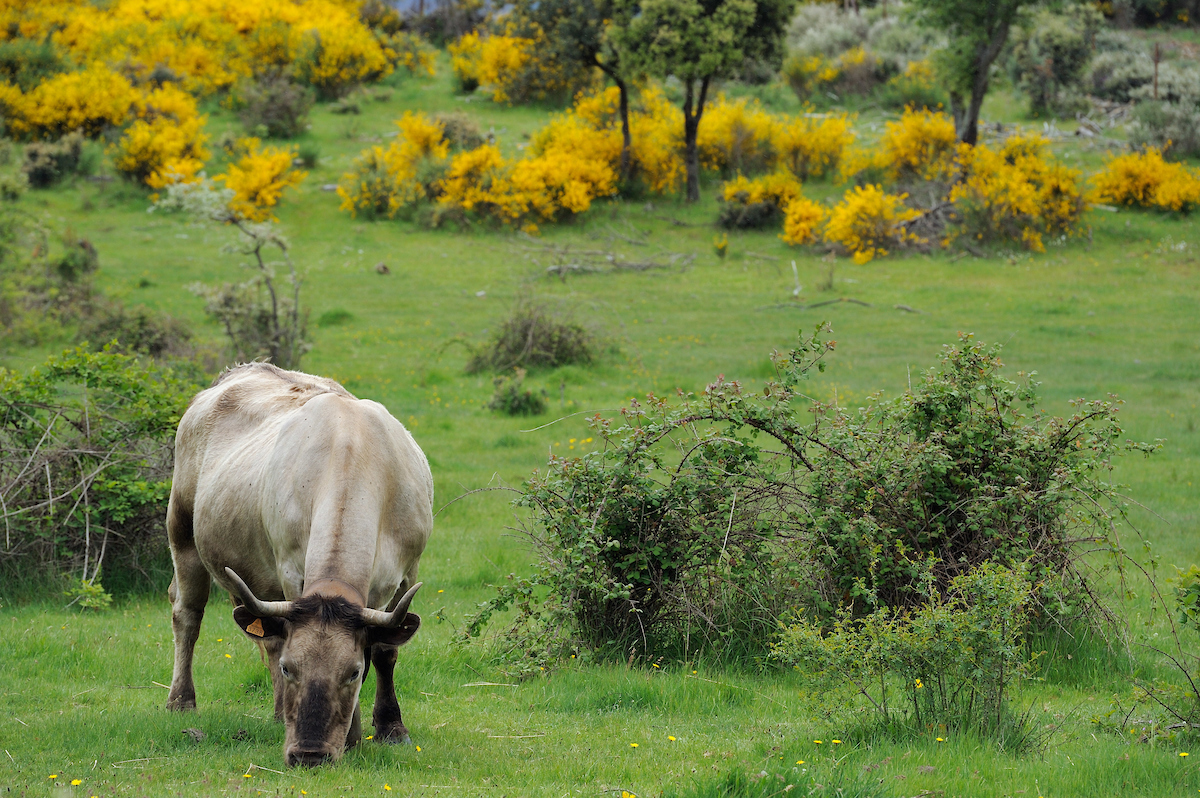
Diverse impacts
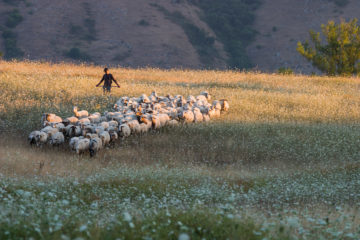
From sheep grazing the wood pastures of the Spanish dehesa (a unique ecosystem made up of mixed grassy pastureland and woodland) to semi-wild horses roaming floodplains in the Netherlands, large herbivores influence European landscapes in myriad ways. As a natural process, grazing by large herbivores delivers many benefits to both wild nature and people, but its impact on the environment differs greatly with grazing type.
Coordinated by Rewilding Europe, the three-year, European Commission-funded GRAZELIFE project aims to evaluate the benefits of various land management models involving domesticated and wild/semi-wild herbivores. As a PhD student involved in the project (based at Leipzig University and the German Centre for Integrative Biodiversity Research (iDiv) in the group for Ecosystem Services and the Synthesis Center sDiv), one of my jobs is to bring together and analyse scientific literature on different types of grazing and assess the benefits that they provide.
Tangible and intangible benefits
Healthy nature can, directly and indirectly, contribute to human wellbeing. Benefits can be classified as provisioning (such as food, fresh water and timber), regulating (such as fire prevention and flood control) or supporting (such as habitat provision and nutrient cycles). They can also encompass non-material benefits to people, such as opportunities for recreation and tourism, or the spiritual and intellectual enrichment linked to a certain type of ecosystem. In the latter case, they may relate to the aesthetic value of a certain type of landscape or the traditions and customs attached to it.
Many people consider meat and dairy goods to be the primary benefits provided by grazing. Yet a closer examination of the different types of grazing shows that they go way beyond this.
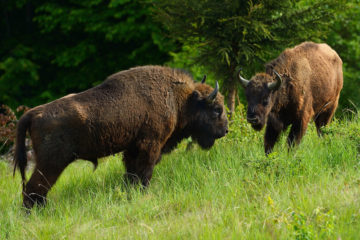
A comprehensive analysis
Conducting a review of scientific reports and articles related to grazing allowed me to build up a comprehensive picture of the natural benefits that grazing provides. This review encompassed domesticated and wild grazing, as well as pastoralism and rewilding with large herbivores, typified by the reintroduction of European bison into the Southern Carpathians rewilding area in Romania by Rewilding Europe and WWF Romania.
Regional variations
The scientific literature that I reviewed focused mostly on grazing by domesticated herbivores, with studies relating to rewilding being scarcer and more recent. I also discovered that some benefits relate to a specific region; literature on grazing and wildfire prevention, for example, is largely focused on the Mediterranean region, where large wildfires are more common due to climate and landscape type.
Carbon storage
I started by investigating the carbon sequestration potential of different types of grazing. As the process of capturing and storing atmospheric carbon dioxide, this is a critical service when it comes to climate change mitigation. Grazing has a direct impact on plant biomass and thereby the amount of carbon stored in soil. It also influences the amount and composition of soil organic matter through its effects on the accumulation and decomposition of dead plant material.
Unsurprisingly, the vast majority of scientific literature reports that intensive grazing – where the food for grazers comes mainly from artificial, seeded pastures – has a negative impact on soil carbon sequestration. Conversely, extensive grazing – in which livestock are raised mainly on food that comes naturally from the landscape – can have a positive effect on the amount of carbon stored in soil (depending on climate and soil characteristics). Extensive grazing is always a better option than ploughing, which releases carbon into the atmosphere and depletes the microorganisms which enrich the soil.
Biodiversity impact
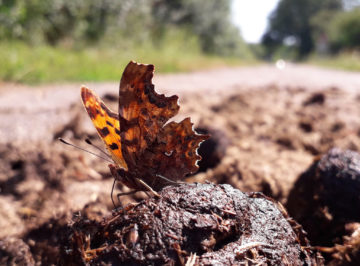
While wild and semi-wild grazing was largely absent from the carbon sequestration studies that I reviewed, there was far more information on the impact of wild grazing on biodiversity. Intensive grazing was clearly shown to have a negative impact on plant and insect biodiversity. When animals graze intensively they consume all palatable vegetation, leaving just a few unpalatable species and areas of bare soil. This kind of grazing severely constrains habitat diversity, reducing opportunities for wildlife (especially insects) to feed and reproduce.
On the other hand, extensive grazing involving free-roaming grazers can enhance biodiversity. By leaving ungrazed patches and adding features such as trails and dung piles, such grazers create varied landscapes with multiple habitat types. It should be noted that medicines given to large herbivores – especially deworming medicines – can have a negative impact on insect diversity, and even affect larger animals such as birds (all worming drugs are essentially poisons, most are dangerous to aquatic life, and all have a negative effect on dung beetles and other microorganisms naturally found in manure).
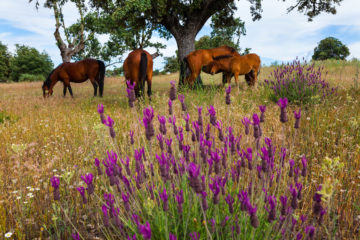
Wildfire prevention
My review also considered wildfire prevention. Using large herbivores for wildfire prevention can be a cost-efficient, low impact way of mitigating fire risk by creating a varied landscape with firebreaks and fuel breaks. Examples of this are the use of so-called “grazing fire brigades” or rewilded large herbivores to control shrub encroachment in Mediterranean regions, such as in the Faia Brava Reserve in northern Portugal, where free-roaming cattle and horses are creating a fire-resilient mosaic landscape.
Aesthetic value
Socio-cultural benefits provided by nature – whether they relate to recreation, enhanced physical and mental health or the aesthetic appreciation of landscapes – are very important, especially in landscapes highly impacted by human presence (such as those found in Europe). The literature I found focused mainly on two types of such benefits; those associated with pastoral systems and extensive agriculture, and the ones associated with rewilding and wild grazing.
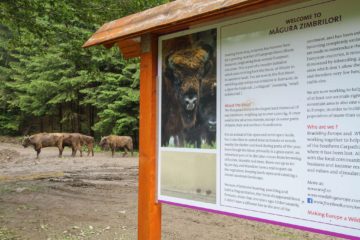
I found that pastoral systems have very strong traditions and aesthetic values associated with them, while also providing opportunities for tourism and recreation. Rewilding with large herbivores, even if it results in landscapes that are aesthetically very different from typical agricultural landscapes, also provides multiple opportunities for recreation, tourism and environmental education. However, human-wildlife coexistence and social acceptance are crucial to the success of land management models that use free-roaming wild grazers.
Towards policy change
My literature review allowed me to shed light on the gaps in knowledge on grazing, and to identify some of the trade-offs between its various benefits and drawbacks. For example, intensive grazing, which leaves very little vegetation or even bare soil, can effectively mitigate wildfires but is not beneficial to biodiversity or climate change mitigation.
The review will effectively be completed, and the knowledge gaps filled, by eight case studies produced through the GrazeLIFE project – these will consider different types of grazing in multiple places across Europe, where Rewilding Europe has partners. This should give me a broad understanding of the multiple benefits that grazing by large herbivores offer.
Ultimately, my research seeks to inform how European policy, especially the Common Agricultural Policy (CAP), can favour sustainable grazing, mainly through subsidies. The CAP has multiple financial instruments that could encourage sustainable grazing and create more space for wild and semi-wild herbivores.
Julia Rouet-Leduc, Doctoral Researcher at iDiv